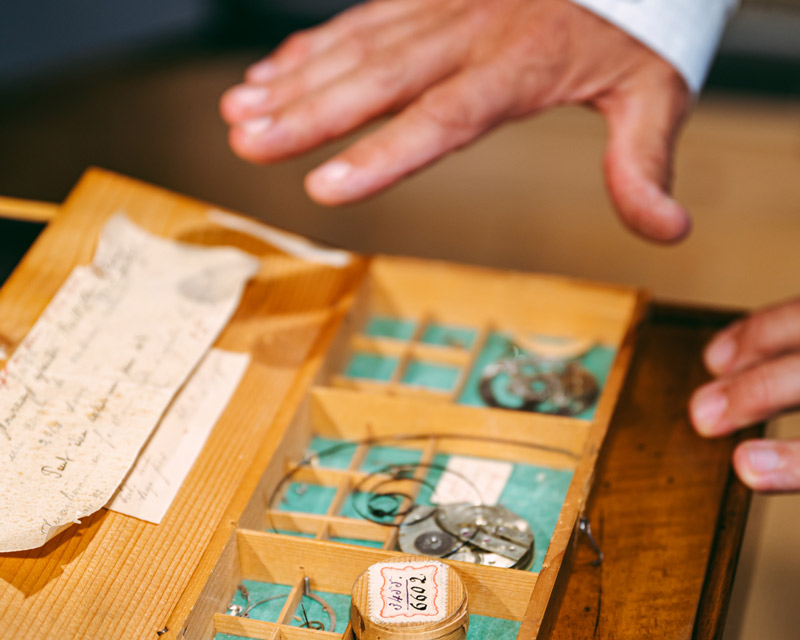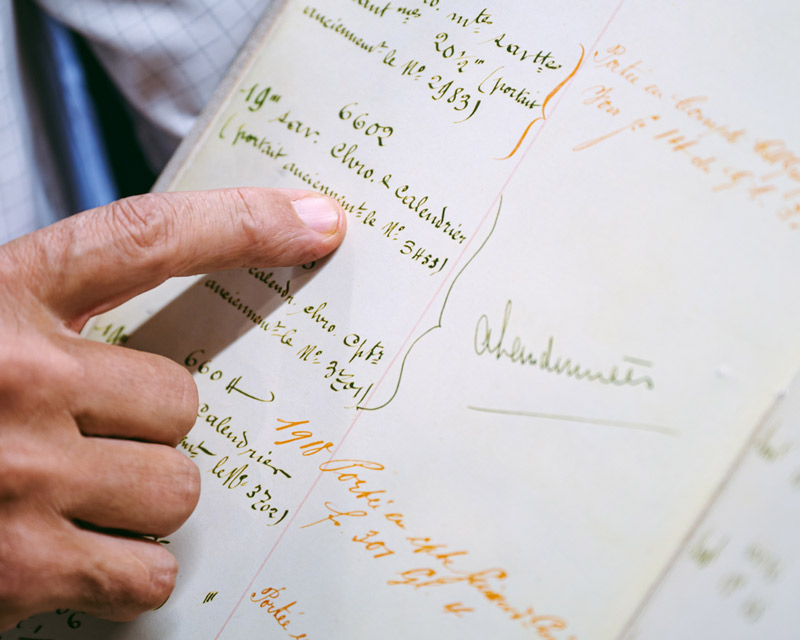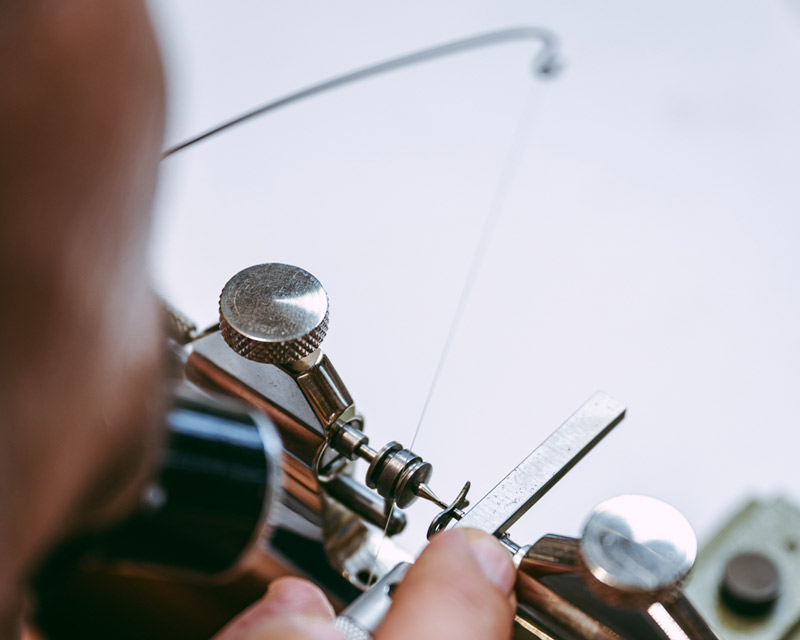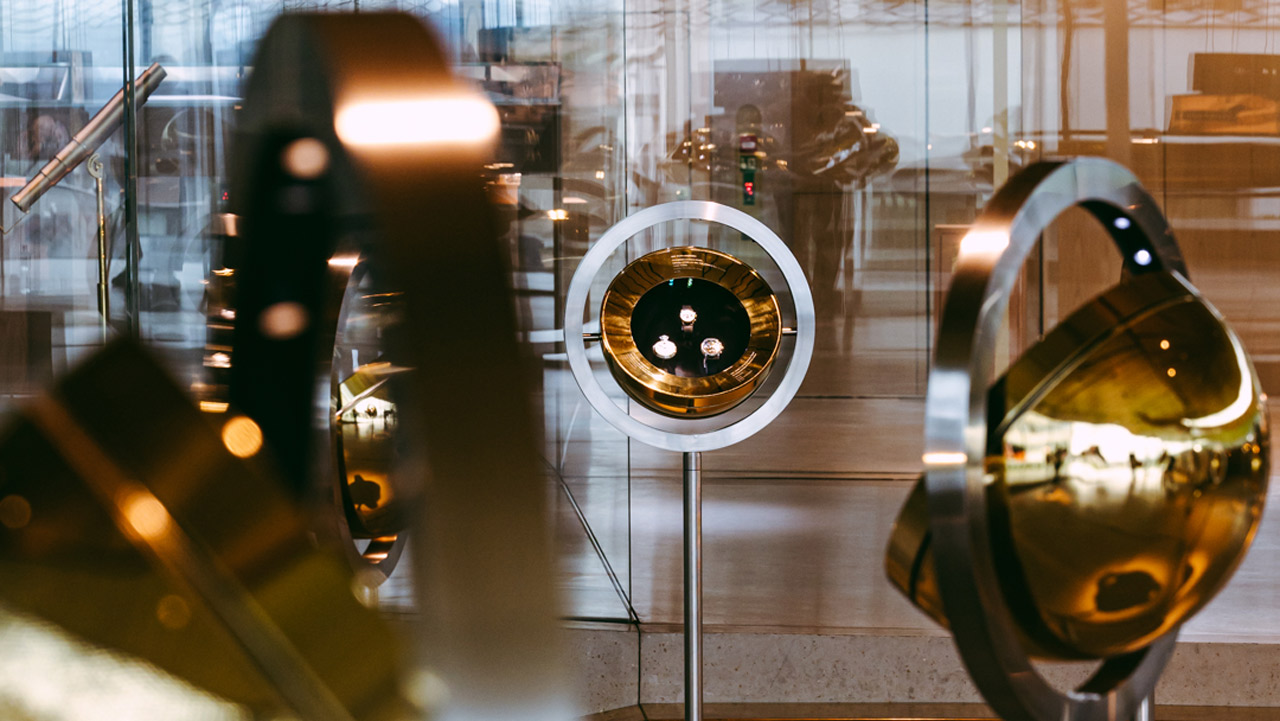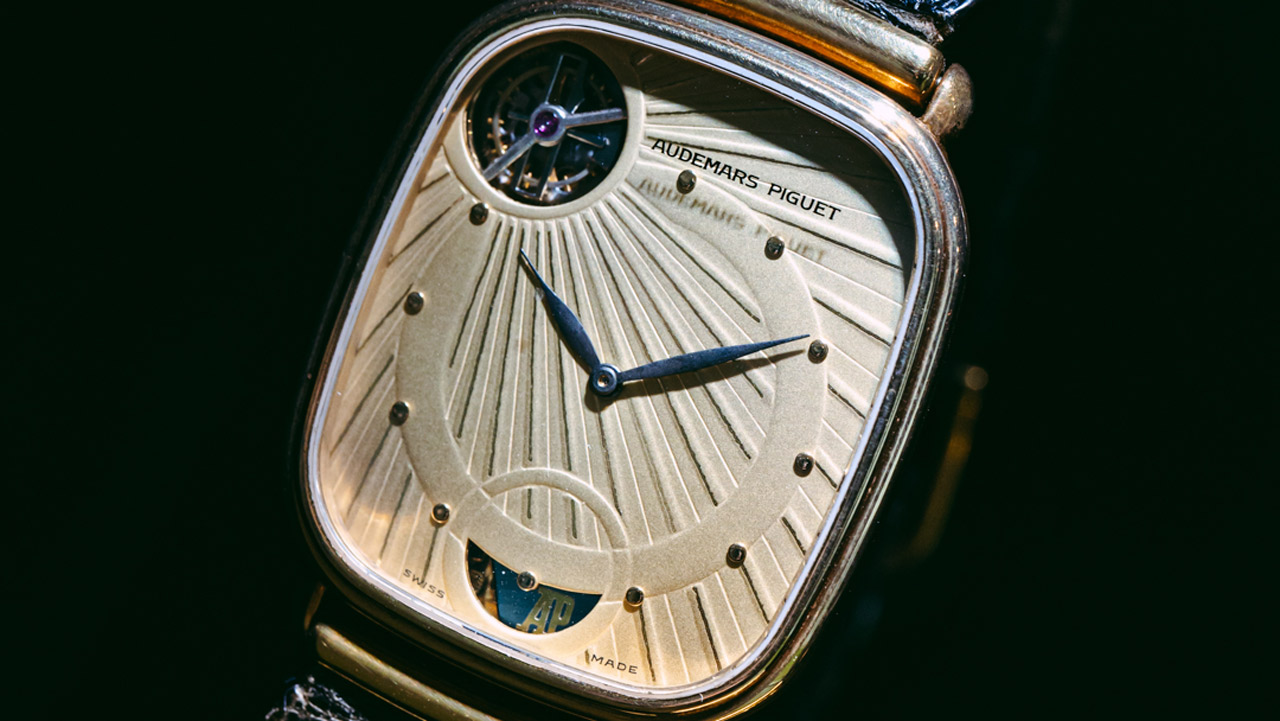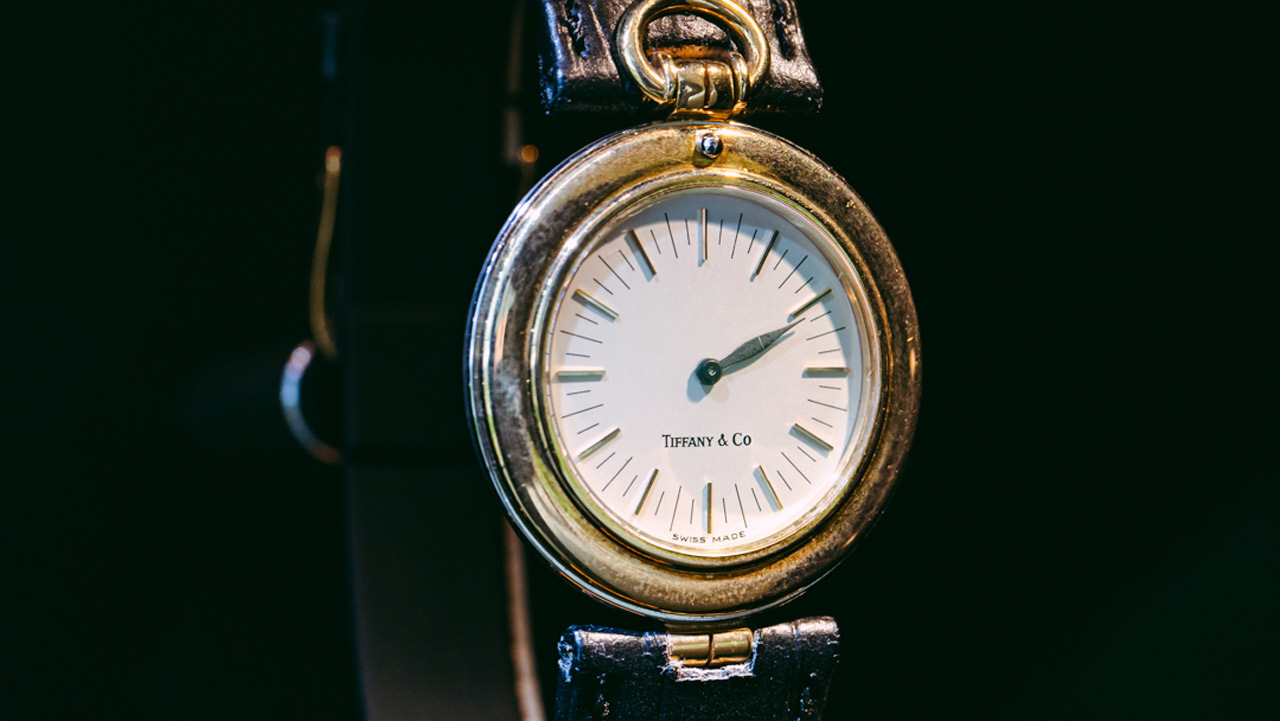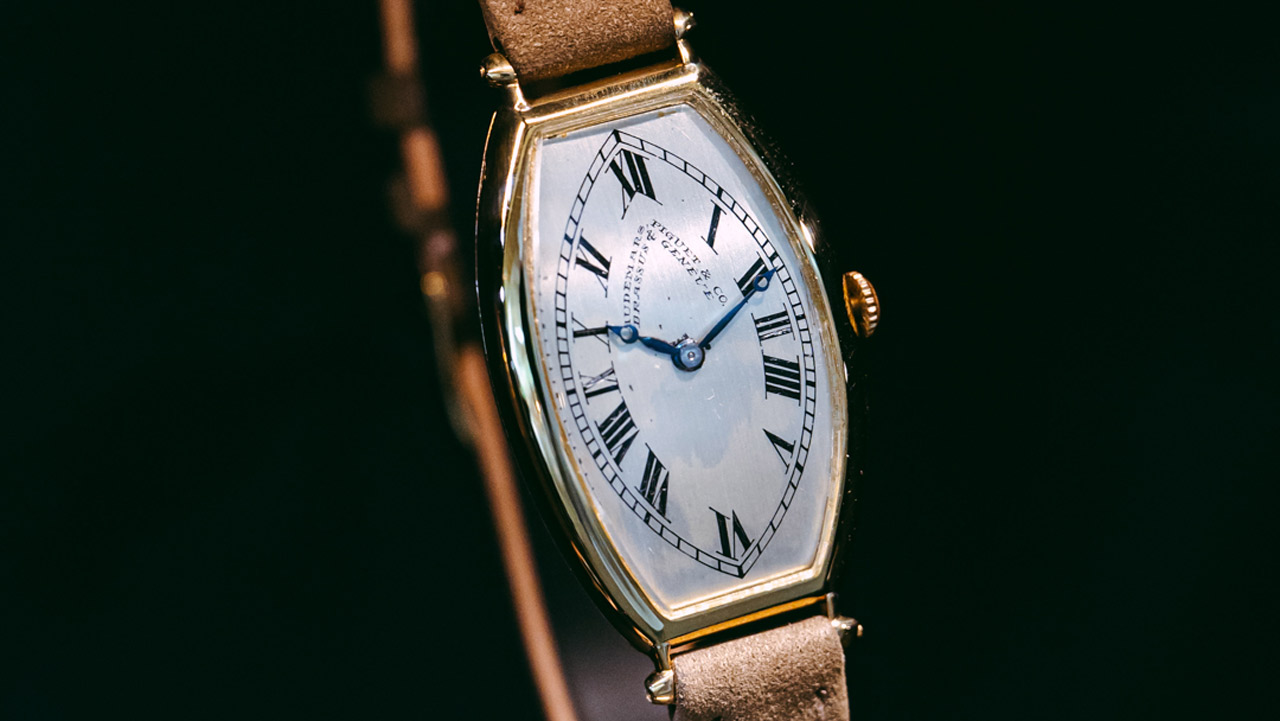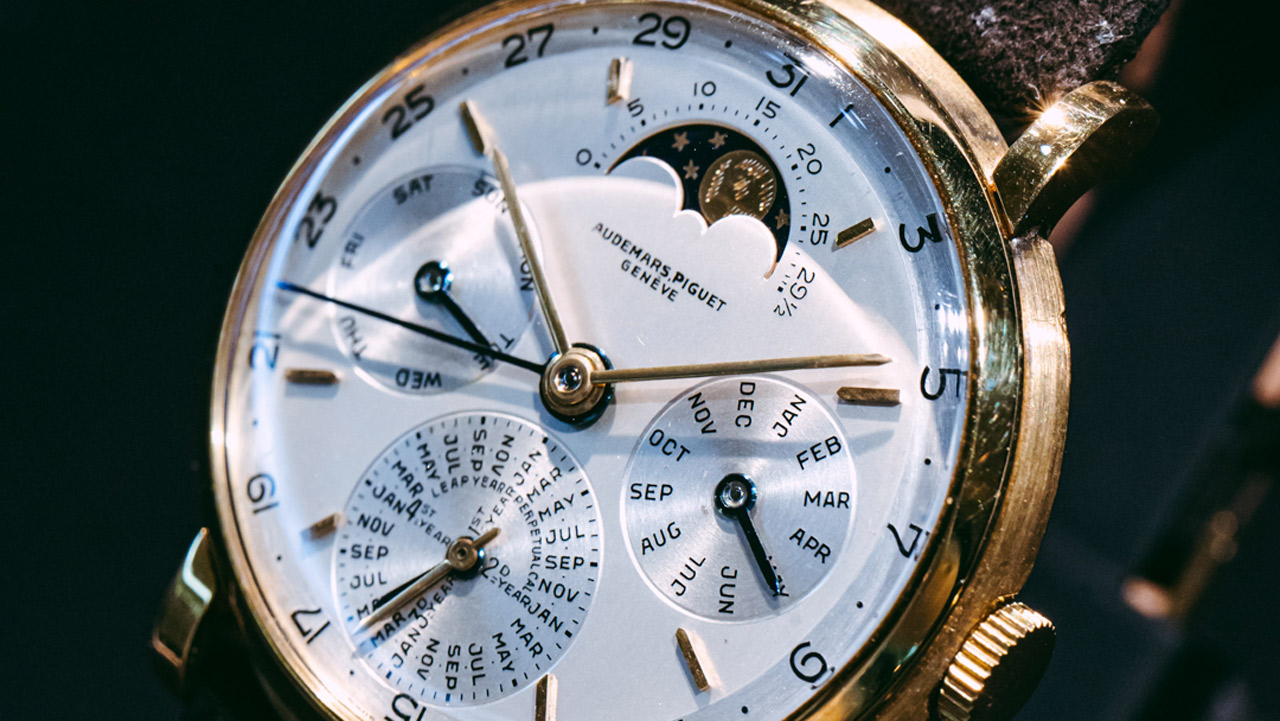When a watch arrives at the restoration workshop, the restorer starts by consulting the records to verify its origin. Then, he opens the supply cabinet...
For many of its historical movements, Audemars Piguet keeps a supply box containing the caliber, spare parts, and sometimes even handwritten documents. If the supply is preserved, the restorer sketches the part and fabricates it using traditional tools, such as the rounding lathe or the bow lathe.
